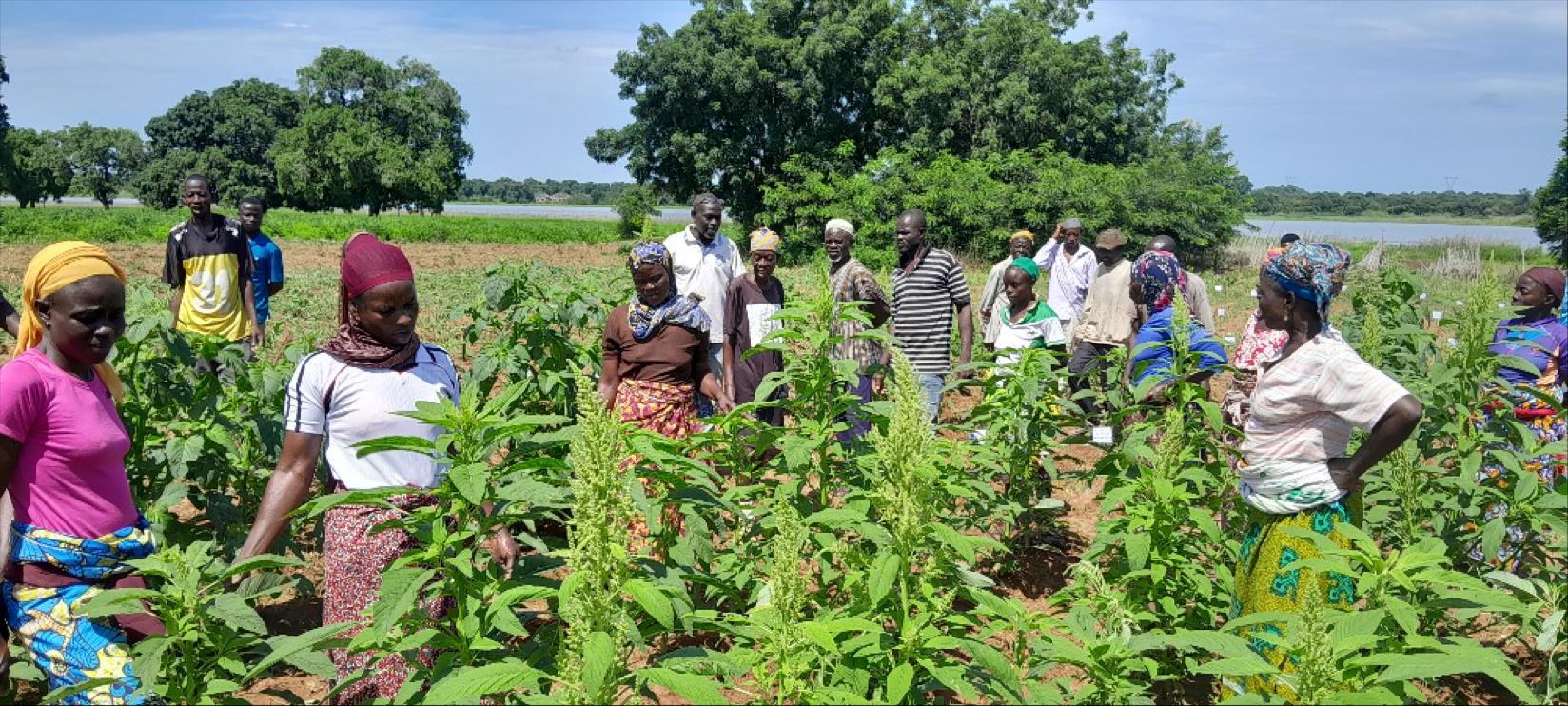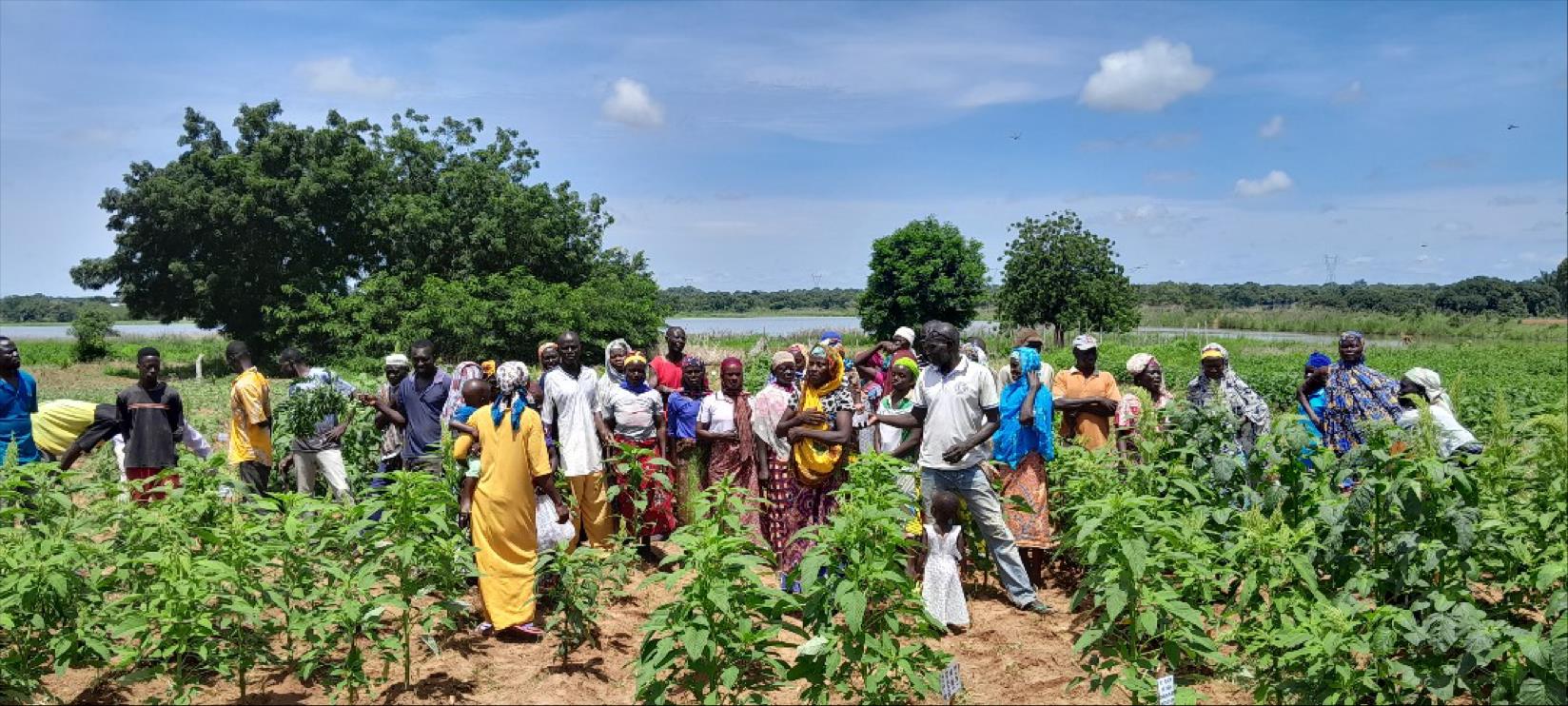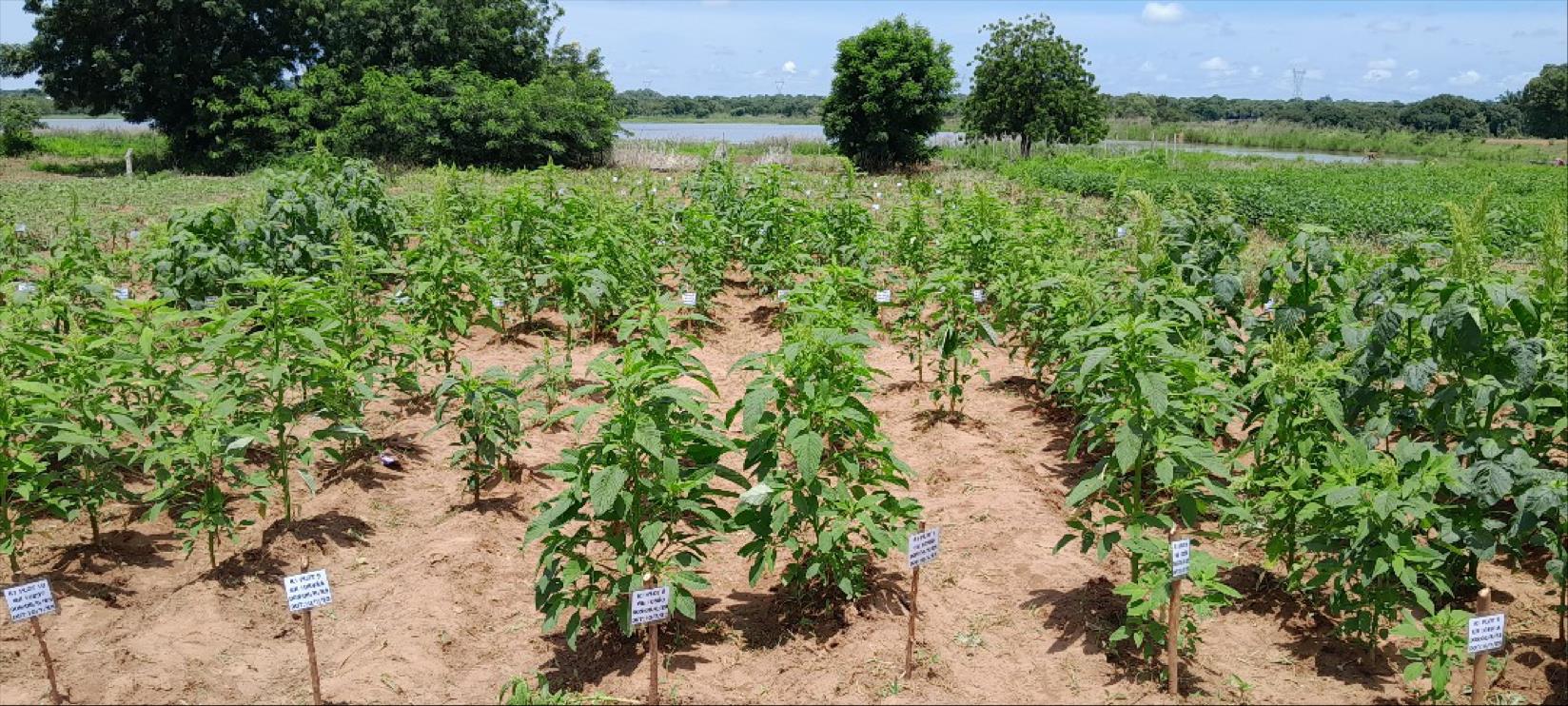Research-Farmer Engagement Leads to the Selection of Promising Amaranth Genotypes for Building Resilience and Enhancing Food Security at Libga

Libga, [August 29, 2023] — In a remarkable display of joint actions to enhance the use of the diversity of Amaranth germplasm at the CSIR-Plant Genetic Resources Research Institute (PGRRI), the National Genebank of Ghana farmers at Libga, and researchers from the CSIR-SARI, Nyankpala, and the CSIR-PGRRI, under the auspices of the Seeds for Resilience (S4R) Project , have jointly conducted participatory varietal selection (PVS) of Amaranth genotypes at Libga. The farmers who took part in the PVS are from the indigenous leafy vegetable (ILV) Germplasm User Group at Libga. Following the selection, seeds of the selected Amaranth genotypes which have traits that farmers find desirable, and which could enhance food security and nutritional value in the region would be multiplied and made available to members of a germplasm user group.

Participatory Varietal Selection in Libga
Amaranth, a highly nutritious and resilient crop, has gained attention for its potential to address malnutrition and improve livelihoods. Recognizing its importance, farmers and scientists working together under the S4R project have been promoting it as an important indigenous leafy vegetable (ILV). The collaboration through which the promotion activities are being undertaken at Libga, a community in the Savelugu Municipality of the Northern Region is aimed at facilitating the access of farmers to important crop collections of the National genebank with which they can build resilience to climate change within their farming contexts. Libga is one of the four beneficiary communities in Ghana for this initiative. The other communities are Golinga (Tolon District), also in Northern region, Barekese (Atwima Nwabiagya District) and Boadi (Oforikrom Municipal) in the Ashanti region.
Participatory varietal selection involves the active participation of local farmers in the evaluation and selection of crop varieties. For instance, at Libga, farmers were involved in the planting, monitoring of growth, and evaluating the performance of different Amaranth genotypes in terms of yield, appearance and resistance to pests and diseases. With this approach, farmers enthusiastically joined the PVS to select Amaranth genotypes that meet their food security and climate resilience needs. Thus, the genotypes that were selected align with the specific needs and preferences of the community for wider adoption.
Germplasm User Groups have the sole objective of promoting access to and use of specific crop collections in genebanks for addressing the adaptation, production and utilisation needs of group members. The members of germplasm user groups are usually drawn from value chain actors of a specific commodity crop e.g., farmers, researchers, extensionists, traders and processors among others.
A mother trial site is an on-farm location where new crop genotypes or varieties are planted for purposes of comparison with local checks using farmer’s crop management practices. At specific crop growth stages, farmers are invited to visit the mother trial site and assess the genotypes or varieties using preference analysis.

Mother trial site for ILVs in Libga
Promisng Results
After months of dedicated work, the farmers through the PVS identified several Amaranth genotypes that exhibited exceptional characteristics suited to the community’s agro-climatic conditions, dietary habits, shelf-life requirements, and target market preference. In addition to these, the selected genotypes produced impressive yields, making them viable options for local farmers aiming to improve their incomes and livelihoods.

Germplasm User Group engaged in genotype selection
Impact on Nutrition
The nutritional benefits of Amaranth which are well-known include high levels of protein, vitamins, and minerals. The successful selection of locally adapted Amaranth genotypes therefore has the potential to enhance the production, consumption, and nutritional intake of residents of Libga and its environs.
Future Prospect
The collaboration between farmers and researchers at Libga is not limited to the activities of the Germplasm User Group there. Plans are underway to promote the cultivation of these promising Amaranth genotypes in the whole community. The broad objective of this initiative is to improve food security, boost local economies, and ensure a healthier future for the community.
Conclusion
The Participatory varietal selection of Amaranth genotypes at Libga stands as a shining example of what can be achieved when communities and scientists come together. It not only enhances agricultural prosperity but also contributes to the overall well-being of the general populace. This innovative approach to selecting and utilising plant genetic diversity to address challenges faced by farmers in their farming contexts may serve as a model for sustainable agriculture.
